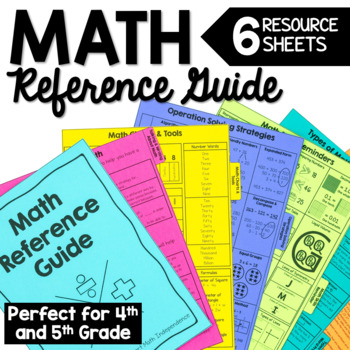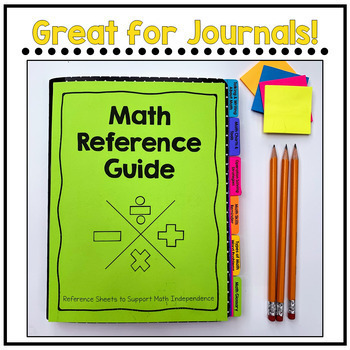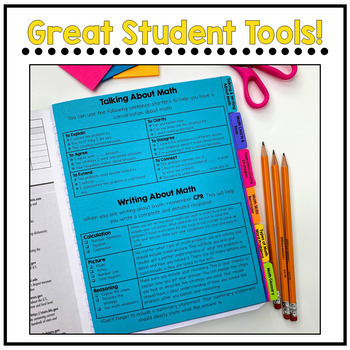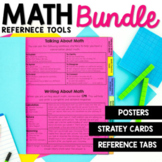Math Reference Sheets
- PDF
What educators are saying
Also included in
- This money-saving bundle has everything you need to teach 4th grade math for the entire year. This bundle includes:Interactive Math Notebook for key 4th grade math skillsNumber Talk Warmup routinesMath Posters to help introduce and teach each 4th grade skillExit Tickets to assessSpiral Review to usePrice $67.50Original Price $97.72Save $30.22
- Help your students become more confident and independent problem solvers. These three math resources will give your students the tools they need to solve challenging math word problems. What's Included?Math Tools Resource Ring - 68 mini math charts to remind students of important math skills. IncludPrice $7.75Original Price $10.50Save $2.75
Description
Help your students become more independent during your math block with these math reference sheets. These six reference pages will provide your students with prompts, sentence stems, formulas, charts, vocabulary terms and other tools to help them build independence and confidence during math.
You can place the reference sheets in a binder, in students journals, or staple them together as a little booklet and have students place them in their math folder.
What's Included:
- Page 1: Talking & Writing About Math
- Page 2: Math Charts & Tools
- Page 3: Operation Solving Strategies
- Page 4: Math Skills Reminders
- Page 5: Types of Math Word Problems
- Page 6: Math Glossary
*See Preview for more details and pictures of each page
________________________________________________________________
Copyright © The Stellar Teacher Co. LLC
www.stellarteacher.com
Permission to copy for single classroom use only.
Please purchase additional licenses if you intend to share this product.







